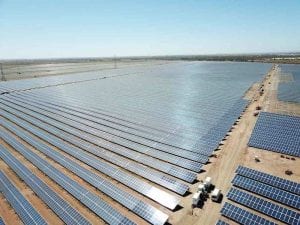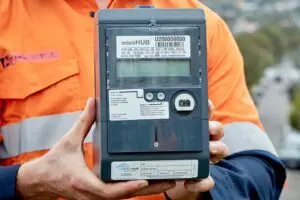It is now five months since the Australian Energy Market Commission published its final determination on three rule change requests relating to access, pricing and incentive arrangements for distributed energy resources.
What’s been happening since? Short answer: lots.
This highly contentious process was derided as a “sun tax” by opponents, although the reforms went far beyond potential for distribution networks to price (that is, to charge or reward) solar and battery energy exported to the grid.
The National Electricity Rules were written a quarter of a century ago, when electricity flows were all one way. The rules have now been updated to recognise the export of energy generated by customers into the grid as a service with value.
There were some major changes between the draft and final determinations:
- Distribution networks will no longer be able to unilaterally impose zero static export limits.
- No customer can be forced onto a tariff which includes charges for exports until 2035 (although those who choose not to may be export limited from July 2025).
- Customer protections and engagement and regulatory oversight of networks by the AER were also strengthened.
Because export tariffs are probably the main concern for RE readers, let’s focus on the pricing part.
Of course, if you are implacably opposed to any kind of export pricing, these late changes are likely to be cold comfort. Instead you might hope that your state or territory minister will opt out of the pricing part of the reform package.
Since the publication of the final determination only one minister has come out clearly against export pricing. Victoria’s Lily D’Ambrosio tweeted the following day that “…we won’t be allowing Victorians to be charged for the extra power they send to the grid.”
While not being explicit about it in public since the final determination, Queensland’s Mick de Brenni is also understood to be against export pricing, so the two government-owned networks in that state, Energex and Ergon, are apparently not pursuing export tariffs.
As far as the other jurisdictions in the National Electricity Market are concerned, with the AEMC’s job done the Australian Energy Regulator has had two main tasks. One is to develop export tariff guidelines “to provide information and guidance to distributors, customers, retailers, intermediaries and other stakeholders about the process for development and approval of export tariffs.”
This process is well underway. We have been impressed with both the AER’s efforts to reach out to and respond to the views of a diverse range of stakeholders, including opponents of the rule change, and its diligent approach to the substantive issues involved.
For instance, the AER has made it clear that it “will not approve two-way pricing options unless a distributor can justify its introduction in its circumstances.” According to the AER, this would require networks to consider:
- individual network circumstances to warrant the introduction of two-way pricing, including their network’s intrinsic hosting capacity;
- how their customers may be impacted if two-way pricing is not introduced;
- evidence of current or estimates of future DER penetration on the network (including rooftop solar, electric vehicles) and how this impacts network costs;
- feedback from stakeholders including customers.
TEC strongly supports this approach, and has been reminding networks that they should not regard the introduction of export tariffs as a given.
In practical terms this implies, for instance, not considering export pricing until obvious and low-cost solutions like transformer tap changes to reduce the risk of overvoltage, and dynamic operating envelopes to take to make the best use of existing hosting capacity, have been implemented.
Even where exports cause material costs to networks, it may be appropriate to recover these costs from all customers where they can be shown to benefit (this is known as the “net market benefit test”).
The AER’s other short-term job has been to develop customer export curtailment values (CECVs). These are the export equivalents of the value of customer reliability (VCR) metrics used to justify spending on new network infrastructure to meet additional demand. They are intended to “demonstrate the extent to which network investments to enable more DER exports are valued by customers and the market, and therefore whether expenditure proposals will be approved by the AER.”
Turning to the networks themselves, some are in the process of designing short-term trials for two way (consumption and export) tariffs alongside other new tariffs for community batteries, EV charging and switching loads like hot water from overnight to to the middle of the day.
If successful, they could be introduced more broadly from 2025—but note again that networks will have to offer a prosumer tariff with no export charge until 2035.
The tariff trials need to be submitted to the regulator at the end of February. Until then they are in various stages of development, including extensive stakeholder consultations, so it would be inappropriate to be specific. (I’ll dig into the details when this information is made public in early March.)
However, when it comes to the charging parameters (eg, the times of the day and energy thresholds) for these trial two-way tariffs, none of the designs we have seen so far are biased towards charging for solar exports in the middle of the day without also rewarding battery exports in the evening peaks.
So battery owners will be the big winners here, whether you use them at home to avoid high network and retail consumption tariffs during the evening peak, or you pump your surplus energy back into the grid in the evening for a substantial network rebate.
Even without a battery, you could benefit financially if you’re able to increase your solar self consumption, face PV panels to the west or (in the near future) use the vehicle to grid capability of your new EV to feed energy back into the grid during the evening peak.
Indeed, in one trial tariff we have seen, many solar owners would come out ahead overall in the warmer months even without either a battery or any behavioural change. This is simply because their PV systems are still pumping out electricity at the start of the peak period, and the network is planning to reward exports at the same rate as it charges for grid consumption at that time.
So far, we see no evidence that networks are using the potential introduction of two-way tariffs to try to gouge more revenue out of solar and battery owners. (The inclusive, transparent and forensic stakeholder engagement processes they are engaged in as they develop firstly trial tariffs, and later their five-yearly tariff structure statements, should certainly help here.)
It’s more a case of slicing up the regulated revenue pie to more accurately and equitably reflect the value of energy exported to the grid at different times of the day – and perhaps also in different locations, although the idea of locational pricing remains contentious.
This is part of the broader shift towards more cost reflective tariffs, which are intended to make the best use of the existing shared grid by using price, among other levers, to signal where and when new investments may be required to support the decarbonisation of the system.
We therefore concur with Solar Citizens, which argued in its submission on the AER’s export tariff guidelines, that they “should provide a framework for export pricing that encourages, and does not constrain, the continued growth of rooftop solar.”
Who knows, perhaps even the sceptical ministers in Queensland and Victoria might eventually come around to the view that in some circumstances well designed, optional export tariffs could be good not only for their states’ decarbonisation plans, but also for the hip pockets of their sun-loving constituents.
Mark Byrne is energy market advocate at the Total Environment Centre, which was one of the original DER export rule change proponents (with ACOSS).










